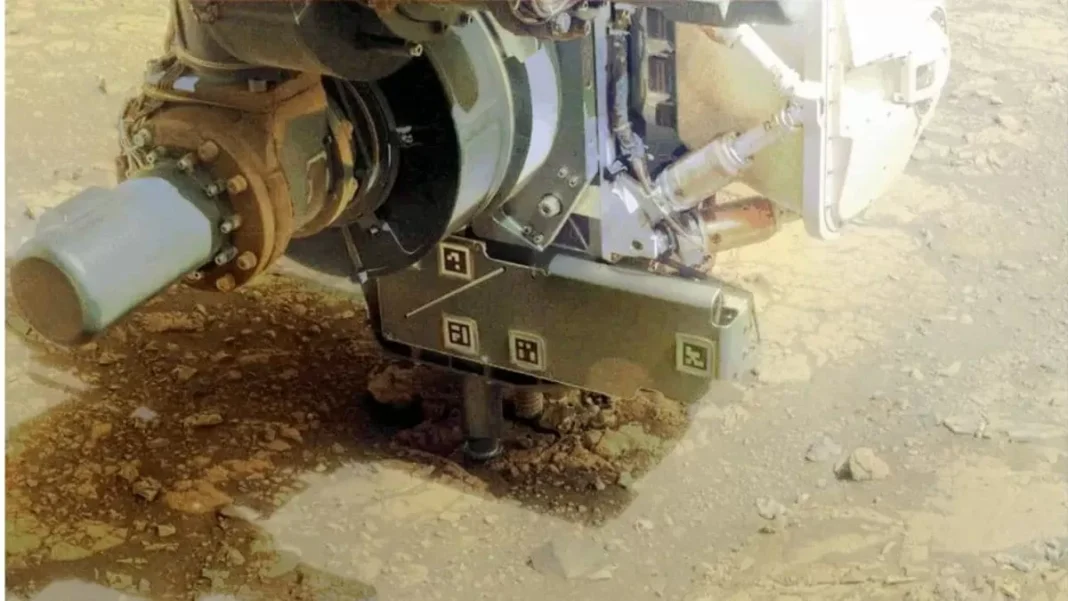NASA’s Perseverance rover is once again making headlines as it continues its mission on the red planet. This time, the rover is grinding into a strange Martian rock called Kenmore, in hopes of uncovering clues about the planet’s past and potential for ancient life.
The Perseverance rover, which landed on Mars in February 2021, has been busy exploring the Jezero Crater, a location that scientists believe was once a lake. The rover’s main objective is to search for signs of ancient microbial life and collect samples that could potentially be brought back to Earth for further analysis.
Kenmore, a rock about the size of a briefcase, caught the attention of NASA scientists due to its unique composition. The rover’s instruments have detected the presence of clay, feldspar, and for the first time, manganese hydroxide, all of which are key indicators of water-related processes and potential habitability on early Mars.
The discovery of these minerals is significant as it provides further evidence that Mars was once a habitable planet. The presence of clay and feldspar suggests that there was once a significant amount of water on the planet’s surface, which is essential for the development of life. Manganese hydroxide, on the other hand, is a mineral that forms in the presence of water and oxygen, further supporting the theory that Mars had a wet and potentially habitable environment in the past.
The Perseverance rover’s ability to analyze the chemical and mineral composition of rocks on Mars is crucial in understanding the planet’s history and potential for life. The rover’s instruments, including the SuperCam and the SHERLOC, use lasers and spectrometers to study the rocks’ inner makeup, providing valuable data for scientists back on Earth.
Kenmore is not the first rock that the Perseverance rover has drilled into. In April, the rover successfully collected its first sample from a rock named “Rochette.” However, Kenmore is the first rock that has yielded such a diverse range of minerals, making it a significant discovery for the mission.
NASA scientists are excited about the potential of Kenmore and what it could reveal about Mars’ past. The rover will continue to study the rock and its surroundings, providing valuable insights into the planet’s geological and environmental history.
The Perseverance rover’s mission on Mars is a testament to human ingenuity and determination. The rover has already achieved several milestones, including the successful deployment of the Ingenuity helicopter and the collection of its first sample. With each new discovery, the rover brings us one step closer to understanding the red planet and its potential for life.
The success of the Perseverance rover’s mission is a result of years of hard work and dedication from the team at NASA. The rover’s advanced instruments and cutting-edge technology have allowed it to make groundbreaking discoveries on Mars, paving the way for future missions and potential human exploration of the planet.
As we continue to explore the mysteries of our solar system, the Perseverance rover’s mission serves as a reminder of the endless possibilities of space exploration. With each new discovery, we gain a better understanding of our place in the universe and the potential for life beyond Earth.
In conclusion, NASA’s Perseverance rover’s latest discovery on Mars is a significant step towards unraveling the planet’s past and potential for ancient life. The presence of clay, feldspar, and manganese hydroxide in the Kenmore rock provides further evidence of Mars’ habitable environment in the past. The rover’s mission continues to inspire and motivate us to push the boundaries of space exploration and uncover the secrets of our neighboring planet.


